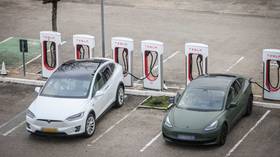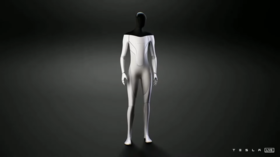Teslas in self-driving mode ‘may perform’ rolling stops

Tesla is inching further toward handing full self-driving power to its cars, with software that can run in three modes, from “chill” to “assertive.” The latter allows a “smaller follow distance” and “may perform rolling stops.”
The three presets for Tesla’s Full Self-Driving (FSD) beta software, presumably designed to match an individual driver’s preferred means of navigating traffic, run the gamut from timid to bold.
Engaging the “assertive” driving mode enables one’s vehicle to follow other cars more closely, increases its likelihood of changing speed lanes and staying in passing lanes, and means it “may perform rolling stops,” according to its official description. Some drivers are concerned this means vehicles won’t stop at stop signs, and it’s unclear how following “closely” will affect vehicles’ performance in inclement weather or heavy traffic situations.
“Average” mode gives the car a “medium follow distance,” though notes it may also “perform rolling stops,” while Teslas operating in “chill” mode give the vehicle in front a wide berth and “perform fewer speed lane changes.”
While FSD is still in beta, a Tesla equipped with the technology was recently involved in a crash, with the driver-assist feature engaged. The incident took place in November, and while no humans were injured in the crash, the Model Y Tesla involved reportedly sustained severe damage on the driver side.
Despite the name, FSD is not actually an autonomous AI driving system, and drivers are supposed to remain engaged with the vehicle, watching the road and touching the steering wheel. Wider rollout has required the driver to receive a high “Safety Score,” as judged by a five-point evaluation system that Tesla uses to estimate “the likelihood that your driving could result in a future collision.” The system has aroused the attention of the National Highway Traffic Safety Administration.
The US government also recently opened an investigation into Autopilot-enabled Teslas crashing into parked emergency vehicles, a problem shared by other driver-assist programs that are trained not to react to stationary objects, lest they balk at every building or sidewalk obstacle the car senses.
Tesla announced last week that it would be raising the price of its FSD software to $12,000 from $10,000, effective January 17 for US customers only. Monthly subscription prices are also supposed to increase as the software, currently in beta, approaches wide release, even though CEO Elon Musk has acknowledged there is no expectation that vehicles thus equipped will be able to fully “self-drive” – beyond maybe “from one’s house to work, most likely without interventions.”













